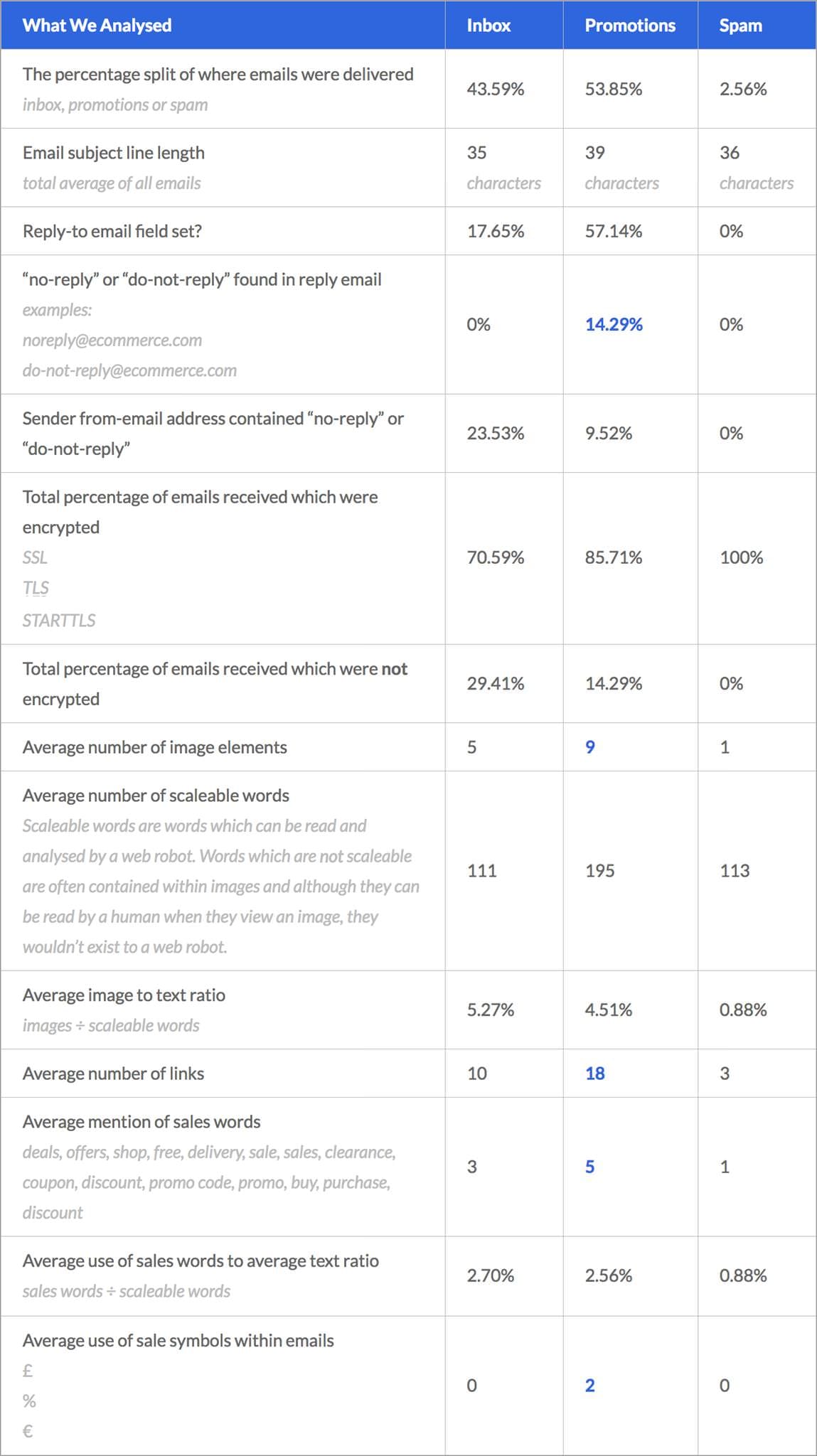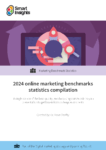Why your email campaigns might not be going directly to your subscriber’s inbox
Despite being one of the oldest forms of digital marketing, email marketing campaigns still boast one of the best returns for investment.
The effectiveness of email campaigns really relies upon the success of your email deliverability and whether your email reaches the main subscriber inbox. This is something that is often overlooked by many email marketers. Email open rate and click-through rate are helpful, but if your email campaign isn’t delivered to a subscribers main inbox and ends up in spam or other email folders, it’s likely that these statistics might be distorted.
Online marketing benchmarks statistics compilation
Use the best quality benchmarks gathered for all aspects of digital marketing in our twice-annually updated statistics compilation. They're ideal for getting a quick snapshot of how channels are performing on a global scale between many different industries and company sizes.
Access the 2024 Online marketing benchmarks statistics compilation
It doesn’t matter how well-crafted your email is, if you’ve spent ages on the design or if you’ve got a really attractive offer. If it gets delivered but doesn’t even get seen by the email subscriber, you’re probably missing out on vital sales and revenue from the get-go.
To analyze just how much deliverability affects email campaigns we took a sample of over 100 E-Commerce websites including large brands like HP and smaller brands like Clifton Cameras. We used this to find out:
- The percentage of E-Commerce websites that offered email newsletters
- The effect on email deliverability and what percentage of emails went to the main inbox, spam or a promotions section of a Gmail inbox
- The factors that affect email deliverability

So, what did we find out?
- Over 62% of E-Commerce websites did not offer an email newsletter. And with the average E-Commerce customer spending £1,245 per year on E-Commerce goods, these businesses are certainly missing out on sales.
- Overall only one email landed in our spam folder. This showed that the basic deliverability of emails was good.
- We found a staggering 53% of emails went straight into the Gmail promotions tab. Now some argue that the Gmail promotions tab does have a strong read rate so this might not be as bad as first thought. However, if you’ve just signed up to an email newsletter, would you really expect your first email (including subscriber confirmation emails) to appear in your promotions tab?
The impact of emails not landing in your main email inbox can have massive implications on how your brand is perceived. If the email is not clearly visible after the user has subscribed, they might anticipate complications when they place an order on your website. So that’s why getting your email strategy right from the start is imperative. Similarly, delivering the email within a reasonable amount of time and delivering relevant content are both factors which significantly affect customer experience - especially if it’s the first interaction.
What factors cause emails to be delivered to spam?
There are many factors that can affect email delivery especially when it comes to spam. Things like:
- Using words with all capital letters
- Using lots of exclamation marks
- All image emails
- IP address reputation
- Domain reputation
What factors did we test in our email deliverability case study?
In order to see what affected email deliverability to Gmail, we analyzed factors which contained a combination of common spam flags and also other factors which were likely to be one of the reasons emails went to the Gmail promotions tab. These were:
- The number of image elements in a newsletter
- The number of words
- The ratio of images to word count
- Whether the newsletter had a ‘reply’ email
- Whether the ‘reply’ email was a genuine address, or whether it was a ‘no reply’/‘do not reply’ address
- Subject line word/character length
- Encrypted vs. non-encrypted emails
- The number of links
- The total number of ‘sales words’, such as deals, offers, discount, coupon and so on
- The total number of ‘sales icons’, such as currency characters
- The time it took for the email to arrive after sign-up

What can we learn from this?
So if you’re sending out an email campaign and you want to give it the best possible chance of landing in your subscriber’s main inbox (and not spam or promotions sections) here are some key guidelines to follow:
- Avoid using sales words and sales symbols where possible, especially in the first email you send. Using too many in the first email you send to a customer will likely land in the Gmail promotions section. Once you get over the hurdle of engaging them for the first time, this matters less, because Gmail learns from the fact that they open and click-through on your emails. Consider sending them a confirmation email and an introductory newsletter to begin with, before moving on to offers and deals.
- Something that really stood out is to avoid using too many links. More links can increase your click-through rates, but too many links are likely to encourage Gmail to categorize your email as a promotion.
- Avoid using no-reply sender or reply-to email addresses. Not only do they negatively affect deliverability, they also decrease engagement since your customers find it harder to contact you. That’s never a good thing.
- On a more general note, ensure that your confirmation email or first newsletter is delivered promptly. The time after a customer signs up for your newsletter is a critical period. You’re fresh in their mind, and they’re ready to engage. If your email arrives two weeks later it’s likely the subscriber will forget why they signed up in the first place. Most emails we received arrived within a 10-minute window of signing up.
What next?
Remember that deliverability is part of a wider picture. Successful email marketing is just as much about content, layout and effective call to actions. But if you look at email marketing today, deliverability is often overlooked for snazzy design, or ignored in the pursuit of effective content. The purpose of this case study is to emphasize that getting the basics right is still important. There’s not much point in crafting the perfect email campaign if it’s going to end up in spam or even promotions, after all.
If you’re currently using email marketing automation or any email marketing software, it’s definitely worth your while to plan regular tests to review your email subscriber experience. Put yourself in your subscriber’s shoes and evaluate the things you need to improve on. If you’re unsure where to start benchmark some of your competitors and analyze what they are doing. Changing just a few small elements with your email campaigns can have a massive impact on your deliverability and if done right, it will greatly improve your email marketing success.
Thanks to Alex Brooke for sharing his thoughts and opinions in this post. Alex is the Marketing Director at
Ripple CRM, a CRM and marketing automation software. You can follow him on
Twitter or connect on
LinkedIn.









